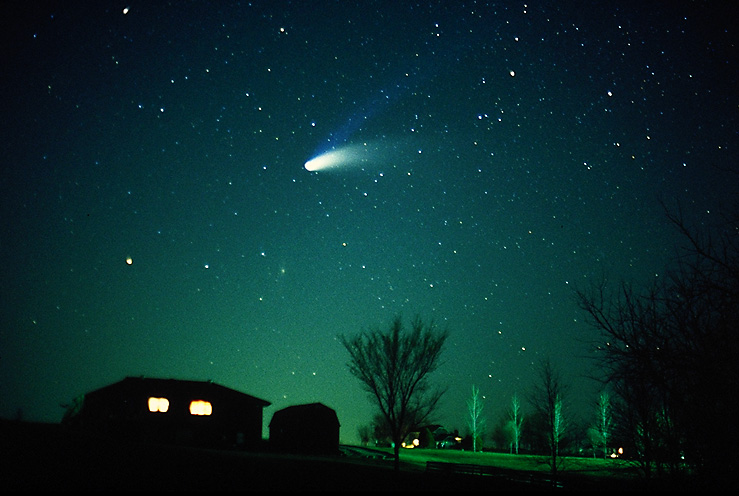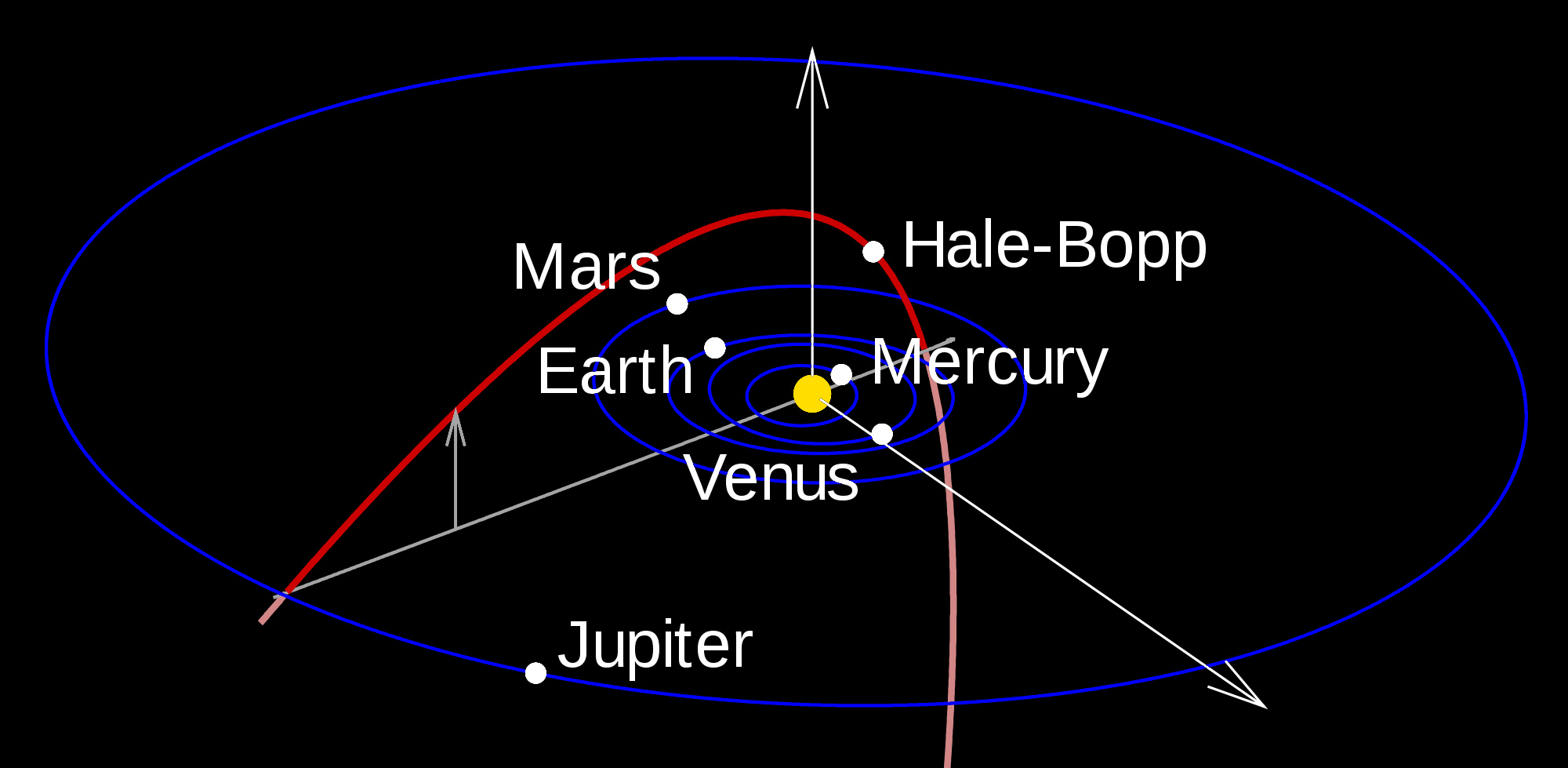Hale Bopp Orbit Map
The current estimate is circa 4380 CE. Hale-Bopp's orbital period was altered due to the gravitational effects of approaching Jupiter as closely as 0.77AU (1 AU = average distance between earth and sun) in April 1996. The orbital period before it approached the solar system planets was about 4200 years, which changed to 2380 years following the gravitational interaction with Jupiter. Any crown juanita bynum mp3 download.

Comet Hale Bopp Orbit
Like most comets, Hale-Bopp also releases large jets of easily vaporized material when it approaches the sun. Igo navigation windows ce. While predominantly H2O, many other compounds such as acetaldehyde, prussic acid, and hydrogen sulfide are also present in these jets. Even though such outgassing has been modeled, it introduces additional uncertainties to orbital period estimation.

Easeus partition master 13.8 license key. This page was last updated on July 18, 2015.
Comet Hale-bopp Orbital Period
It takes about 2,534 years for Hale-Bopp to orbit the sun once. Hale-Bopp last reached perihelion (closest approach to the sun) on Apr. How Comet C/1995 O1 (Hale-Bopp) Got Its Name. Comets are usually named for their discoverer(s) or for the name of the observatory/telescope used in the discovery. APOD: 2005 May 22 - The Dust and Ion Tails of Comet Hale-Bopp Explanation: In 1997, Comet Hale-Bopp's intrinsic brightness exceeded any comet since 1811. Since it peaked on the other side of the Earth's orbit, however, the comet appeared only brighter than any comet in two decades. Visible above are the two tails shed by Comet Hale-Bopp. Hale-Bopp: A Profile. Scientists and organizations around the world studied Hale-Bopp intently. The Pic du Midi Observatory determined that the comet rotated every 11.4 hours as it traveled through space. When Hale and Bopp discovered Hale-Bopp, it was an unusually bright comet outside of Jupiter's orbit.

